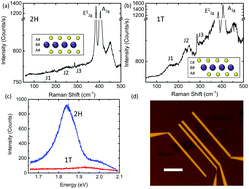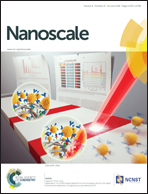Dynamics of chemical vapor sensing with MoS2 using 1T/2H phase contacts/channel
Abstract
Ultra-thin transition metal dichalcogenides (TMDs) films show remarkable potential for use in chemical vapor sensing devices. Electronic devices fabricated from TMD films are inexpensive, inherently flexible, low-power, amenable to industrial-scale processing because of emergent growth techniques, and have shown high sensitivity and selectivity to electron donor analyte molecules important for explosives and nerve gas detection. However, for devices reported to date, the conductance response to chemical vapors is dominated by Schottky contacts, to the detriment of the sensitivity, selectivity, recovery, and obscuring their intrinsic behavior. Here, we use contact engineering to transition the contacts in a MoS2 FET-based chemical vapor sensor to the 1T conducting phase, while leaving the channel in the 2H semiconducting state, and thus providing Ohmic contacts to the film. We demonstrate that the resultant sensors have much improved electrical characteristics, are more selective, and recover fully after chemical vapor exposure—all major enhancements to previously MoS2 sensor devices. We identify labile nitrogen-containing electron donors as the primary species that generate a response in MoS2, and we study the dynamics of the sensing reactions, identifying two possible qualitative models for the chemical sensing reaction.


 Please wait while we load your content...
Please wait while we load your content...